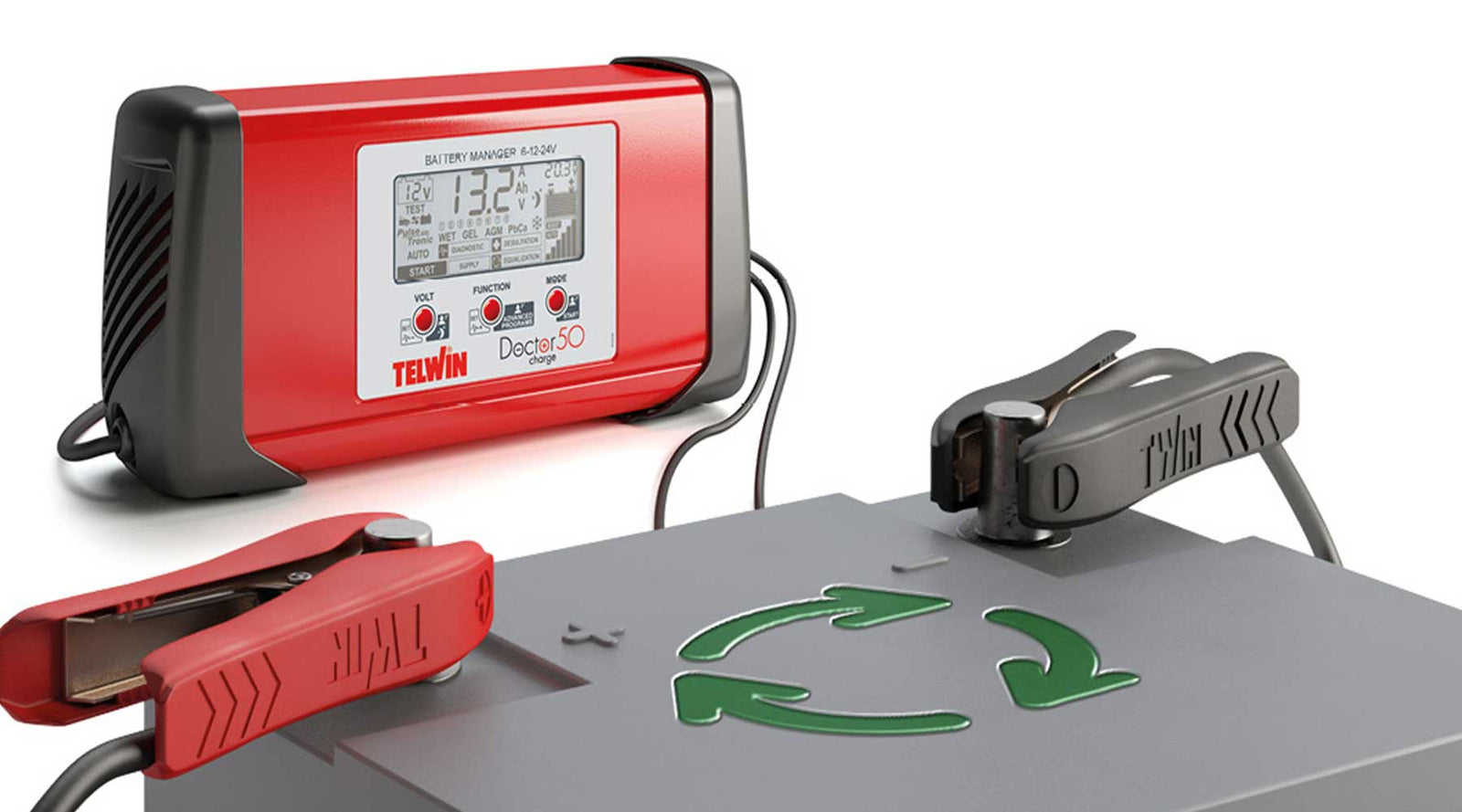Need Some Help? 0161 223 1843
Need Some Help? 0161 223 1843

September 03, 2019 4 min read
The Telwin Doctor Charge 130 and 50 are a new breed of charger, starter, maintainer, and BSU for workshops and bodyshops.
Here we review the Doctor Range of products from Telwin
I personally use the Telwin Doctor Charge 50 to keep my classic Alpina car battery in tip top condition while it’s being stored in the garage. The trouble is with a lot of these modern classics is how much electronics is still drawing current even with the ignition key switched off. Before the Doctor 50 I went through 3 batteries that cost me over £300 to replace. Now I just leave the Doctor 50 connected at all times and leave it to do it’s stuff. The site of the OK on the screen is really reassuring when ever I’m in the garage.
Modern vehicles create a modern problem in the fact that so much electronics are critical to the vehicle and they require current even when the vehicle is switched off and stationary.
Even in car showrooms, the need for a battery maintainer is important to keep the circuits charged. In fact, companies like Jaguar insist that any vehicle in a showroom has this form of BSU ( Battery Support Unit) connected to its vehicles for this purpose.
These BTUs (Battery Support Units) are critical when repairing especially when reprogramming ECUs and other vehicle systems. They provide a reliable constant current while the repair is being carried out.
The Telwin Doctor Charge use the innovative Power Stream Technology which guarantees better performance, up to 50% more than traditional battery chargers. The Pulse Tronic technology guarantees optimal battery charging over 8 phases.
Power Stream (Switch Mode Power Supply) inverter technology enables a reduction in dimensions for the same output, this makes the doctor charge easier to carry and more powerful than other types of charger.
Power Stream offers greater efficiency in energy transfer giving faster charging and longer-lasting battery health.
ELECTRONIC CONTROL OF THE CHARGING PROCESS
The latest electronics enable more sophisticated means of monitoring and maintaining the process of charging your battery. Telwin calls it Pulsetronic.
Constant control of the charging process, on the one hand, prevents possible battery overcharging and overheating, and on the other hand returns the battery to optimal condition, the result is a perfectly charged battery with extended battery life.
The charge maintenance process is as important as the charging process when batteries are not used for long periods of time and therefore tend to naturally discharge.
This has 8 processes:
CHECK control of battery conditions and check of the correct voltage set on display.
DESULFATION detection and recovery of sulfated batteries; pulses allow the removal of sulfate from the lead plates thus restoring initial capacity.
ANALYSE analysis of the battery status to check is the battery is faulty or not.
MAIN CHARGE recharge with the maximum current up to 80% of the battery capacity
FINE CHARGE recharge with decreasing current up to 100% of the battery capacity
VERIFY check run to verify if the battery holds the charge
FLOAT maintenance of the charge at a constant voltage
PULSE recovery of optimal charge by pulses

One of the problems that reduce battery life is called sulfation, which can degenerate battery performance until it is no longer usable. The concept of desulfation therefore arises, a process that returns battery operation, lengthens its life and eliminates the need for early replacement.

The same chemical reaction on which lead battery operation is based, in addition to supplying electric energy, creates an electrochemical condition that progressively degenerates the battery components and ends up in a loss of energy storage. During discharging, the lead plates (electrodes) react with the electrolytic acid solution and create lead sulfate crystals.
These crystals deposit on the surface of the plates, which stops the electrochemical process from working correctly, which in turn degenerates battery performance; this situation is called “sulfation”.
When a battery is recharged, these crystals should be reabsorbed by the electrolytic solution, and normal conditions should return, but excessive accumulation makes crystal dissolving difficult, which damages correct battery operation.
The term “desulfation” therefore introduces a forced process that replaces the initial density of the electrolyte solution with the application of special current impulses that disaggregate these crystals (breakage of the molecule bonds between the lead ions and the acid sulfate ions), which restores battery conditions.
Battery sulfation is caused by many different things, but the battery remaining for long periods without being used, and therefore subjected to self- discharging, is probably the most common. In addition, the continually growing number of devices in today’s vehicles that constantly require energy even when the engine is switched off, for example, alarm systems, can cause the battery to discharge progressively and create the conditions for sulfation.
For
The Telwin Doctor 50 and 130 offer a lot of features for the size and the price.
Automatic functions for test and repair.
Great price compared to competitor equipment.
Easy to carry or maneuver ( 130 can be put on a dedicated trolley)
Against
The control panel does look a little complicated with too much information on view.
Instructions could be better.
Comments will be approved before showing up.